new posts in all blogs
Viewing: Blog Posts Tagged with: childrens literature in translation, Most Recent at Top [Help]
Results 1 - 7 of 7
How to use this Page
You are viewing the most recent posts tagged with the words: childrens literature in translation in the JacketFlap blog reader. What is a tag? Think of a tag as a keyword or category label. Tags can both help you find posts on JacketFlap.com as well as provide an easy way for you to "remember" and classify posts for later recall. Try adding a tag yourself by clicking "Add a tag" below a post's header. Scroll down through the list of Recent Posts in the left column and click on a post title that sounds interesting. You can view all posts from a specific blog by clicking the Blog name in the right column, or you can click a 'More Posts from this Blog' link in any individual post.

By:
Betsy Bird,
on 12/11/2016
Blog:
A Fuse #8 Production
(
Login to Add to MyJacketFlap)
JacketFlap tags:
Best Books,
translations,
children's literature in translation,
translated picture books,
imports,
Best Books of 2016,
2016 imports,
2016 translated children's books,
31 days 31 lists,
Add a tag
 I know it gets confusing but this list is a bit different from the Calde-not list from a couple days ago. The reason is simple. While the Calde-not list looks primarily at books with illustrations so distinguished they could easily win major illustration awards if given half a chance, this is list is more for those books that may not blow you away on a first glance, but that make our publishing landscape richer for their very existence. I was inordinately pleased after I read each and every one of these books. They’re a little peculiar, distinctly different from what you’ll find in the American market, and altogether remarkable.
I know it gets confusing but this list is a bit different from the Calde-not list from a couple days ago. The reason is simple. While the Calde-not list looks primarily at books with illustrations so distinguished they could easily win major illustration awards if given half a chance, this is list is more for those books that may not blow you away on a first glance, but that make our publishing landscape richer for their very existence. I was inordinately pleased after I read each and every one of these books. They’re a little peculiar, distinctly different from what you’ll find in the American market, and altogether remarkable.
2016 International Imports for Kids
Picture Books
Chirri & Chirra by Yuki Kaneko
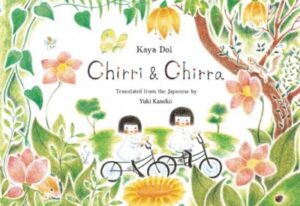
Sweet and dreamlike, this Japanese import has a light and sweetness to it that will simultaneously make it deeply beloved in a few select homes, while also not drawing so much attention to itself that it ever becomes much more than a cult hit in the States. Do yourself a favor and discover it. It’s the kind of book you want to influence the dreams of your children with.
Cry, Heart, But Never Break by Glenn Ringtved, ill. By Charlotte Pardi
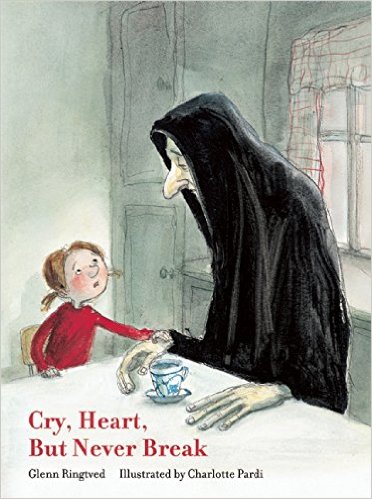
This Danish import just reminds us that when it comes to poetic picture books about death, American just don’t deal very well. Our death books tend to either be straightforward guides (here’s what to expect, etc.) or complete and utter fanciful metaphors. This book feels like it’s both fable and straightforward talk. A rare thing.
The Day I Became a Bird by Ingrid Chabbert, ill. Guridi

Kirkus didn’t get it. SLJ did. In this story a boy falls in love with a bird-loving girl. To get her attention he constructs an elaborate bird costume. Make of that what you will.
Don’t Cross the Line! by Bernardo P. Caravalho, ill. Isavel Martins

Portugal! And an interesting book at that. This one combines the interactive qualities of something like Don’t Let the Pigeon Drive the Bus or Press Here with a political statement about thwarting unjust authority. This book may get a bit more play in the coming years.
Look Up by Jung Jin-Ho

I love this one since it confronts and rearranges the reading experience and expectations of children. Add in the fact that it stars a girl in a wheelchair (who is not solely defined as a person from that chair) and you’ve got a golden book on your hands.
My Baby Crocodile by Gaetan Doremus
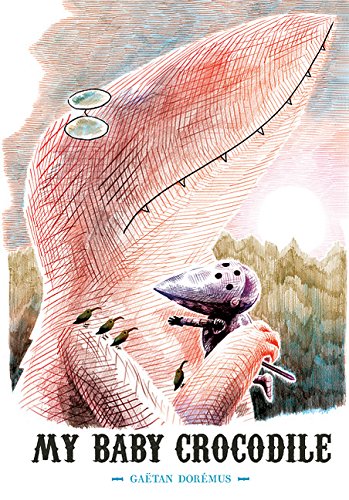
Funny story. I cannot read this book without setting it to the tune of “My Funny Valentine”. I suspect that this is because the two phrases share the same number of syllables more than anything else, but maybe it also has to do with the strange nature of love celebrated in this book. The story is between a near-sighted crocodile that “adopts” a knight, thinking he’s a baby croc. It’s odd and sweet and strange and funny. Memorable too.
A Promise Is a Promise by Knister, ill. Eve Tharlet

I found this one interesting perhaps because of the deep-seated feeling of betrayal our hero suffers in the course of things. It’s a very childlike understanding of an impossible promise and I like how it’s handled. A book that belies its cutesy cover.
Undercover by Bastien Contraire
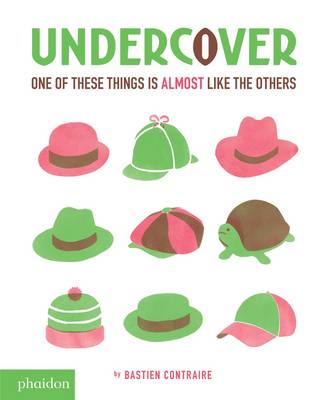
I absolutely adore this book. It’s a story where you have to spot the thing that doesn’t match. Contraire, living up to his name, doesn’t make it easy on you, though. The cover alone should be enough to prove that to you.
What Color Is the Wind? By Anne Herbauts
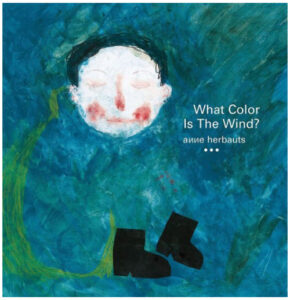
I’ve already reviewed it but if you somehow missed mention of this marvelous books about blindness and tactile response, now’s the time. You won’t find anything else like it on the market today.
Why Am I Here? by Constance Orbeck-Nilssen, ill. Akin Duzakin

Big questions for little brains. I like this one a lot. Lemur or not lemur.
Middle Grade
The Birth of Kitaro by Shigeru Mizuki

Honestly the backmatter explaining the entire history of the yokai in Japanese history and literature is some of the most fascinating stuff here. In a way, this book reads like what would have happened if Quasimodo turned into a superhero rather than a bell fantastic. I loved the peculiar (to me) nature of the storylines, the characters, and particularly the creatures.
The Heartless Troll by Oyvind Torseter
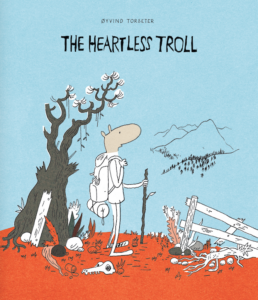
The troll is, without a doubt, one of the most horrific renderings I’ve seen in a children’s book in a long time. Which is to say – it’s awesome! Definitely hand this to older kids, but appreciate it on your own when you get a chance. As graphic novels go, there are few things to compare it to.
Under Earth / Under Water by Aleksandra Mizielinska and Daniel Mizielinski
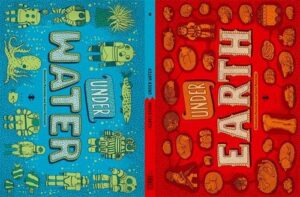
This Polish import is fantastic. There was a book of maps that came out from this couple previously. I’m not as big a fan of those, but what I am a fan of is learning about all that goes on below. Good times.
Misc
And just a quick shout-out to the Candied Plums titles that aren’t online yet. These are the real deal. I just adore them:
- Little Rabbit’s Questions by Dayong Gan, translated by Helen Wang (978194529270 – www.candiedplums.com)
- Picking Turnips by Xu Zhou, translated by Adam Lanphier (9781945295263 – www.candiedplums.com)
- Who Wants Candied Hawberries? by Dongni Bao, ill. Di Wu, translated by Adam Lanphier
Interested in the other lists of the month? Here’s the schedule so that you can keep checking back:
December 1 – Board Books
December 2 – Board Book Adaptations
December 3 – Nursery Rhymes
December 4 – Picture Book Readalouds
December 5 – Rhyming Picture Books
December 6 – Alphabet Books
December 7 – Funny Picture Books
December 8 – Calde-Nots
December 9 – Picture Book Reprints
December 10 – Math Picture Books
December 11 – Bilingual Books
December 12 – International Imports
December 13 – Books with a Message
December 14 – Fabulous Photography
December 15 – Fairy Tales / Folktales
December 16 – Oddest Books of the Year
December 17 – Older Picture Books
December 18 – Easy Books
December 19 – Early Chapter Books
December 20 – Graphic Novels
December 21 – Poetry
December 22 – Fictionalized Nonfiction
December 23 – American History
December 24 – Science & Nature Books
December 25 – Transcendent Holiday Titles
December 26 – Unique Biographies
December 27 – Nonfiction Picture Books
December 28 – Nonfiction Chapter Books
December 29 – Novel Reprints
December 30 – Novels
December 31 – Picture Books


By:
Betsy Bird,
on 8/1/2016
Blog:
A Fuse #8 Production
(
Login to Add to MyJacketFlap)
JacketFlap tags:
Hamilton,
Astrid Lindgren,
Little Golden Books,
dioramas,
The Lion the Witch and the Wardrobe,
Ellen,
Archie comics,
Fusenews,
book to screen,
Elephant & Piggie,
children's literature in translation,
Ursula Vernon,
Minh Le,
Steph Laberis,
Add a tag
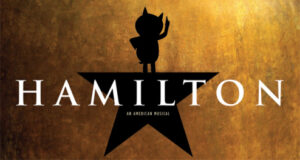 Here’s the thing about Minh Lê. He doesn’t blog terribly often, but when it does it just sort of explodes like an atom bomb on the scene. His Hamilton starring Elephant and Piggie . . . sheer brilliance. I’m just mad I didn’t think of it myself (not that I could ever have paired the text and art as well as he has). The best thing you’ll read today.
Here’s the thing about Minh Lê. He doesn’t blog terribly often, but when it does it just sort of explodes like an atom bomb on the scene. His Hamilton starring Elephant and Piggie . . . sheer brilliance. I’m just mad I didn’t think of it myself (not that I could ever have paired the text and art as well as he has). The best thing you’ll read today.
Translation? An art. I once heard that the reason the French are as crazy as they are about Edgar Allan Poe is that his translator (Stéphane Mallarmé?) improved upon the original English. Monica Edinger thinks about translation in the context of Struwwelpeter (love that stuff) and links to a Guardian article you’d do well to notice.
Yesterday my family and I returned from our annual trip to the Stratford Shakespeare Festival in Stratford, ON. While there, my five-year-old saw her very first play; a killer production of The Lion, the Witch, and the Wardrobe done with puppetry akin to War Horse. I guess I’ve had C.S. Lewis on the brain anyway, though, since I saw these adorable dioramas of famous scenes in books. Here’s the Wardrobe one:
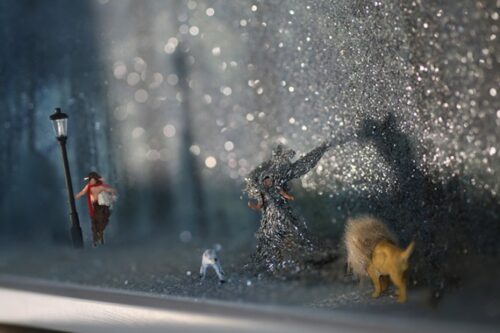
When phys.org wrote a piece about book deserts (places where children lack access to books) there was a lot to pick apart. Looking through it, I found fascinating the part that said, “While online book sales have grown in recent years, three out of four children’s books are still bought in brick and mortar stores,” as well as, “dollar stores were the most common place to buy children’s books.” Dollar stores. I know that bookstores, aside from being difficult to find in low-income areas, contain books too pricey for most people to afford (see a recent comparison between British and American chain bookstores here), but it never occurred to me that dollar stores would be the obvious next step. If I were a forward thinking self-published author, that’s where I’d concentrate on getting my books. If the money evened out, of course. And speaking of books that are affordable for all people . . .
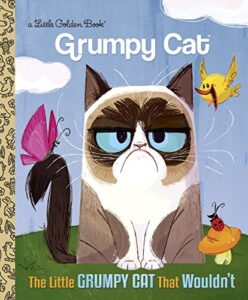 Good morning, class! I trust you are well rested this morning. Now, when we last met we were reading Leonard Marcus’s Golden Legacy: The Story of Golden Books. Your homework today is to consider the newest Little Golden Book on the market The Little Grumpy Cat That Wouldn’t. Place within the context of the Golden Books’ past how converting a YouTube sensation into a Golden Book both supports and/or undermines their historical legacy. Extra credit if you’ve worked into your report the work of illustrator Steph Laberis and the history of animators contributing to the Golden Books of previous decades. Papers are due in one week. No extensions.
Good morning, class! I trust you are well rested this morning. Now, when we last met we were reading Leonard Marcus’s Golden Legacy: The Story of Golden Books. Your homework today is to consider the newest Little Golden Book on the market The Little Grumpy Cat That Wouldn’t. Place within the context of the Golden Books’ past how converting a YouTube sensation into a Golden Book both supports and/or undermines their historical legacy. Extra credit if you’ve worked into your report the work of illustrator Steph Laberis and the history of animators contributing to the Golden Books of previous decades. Papers are due in one week. No extensions.
We can’t seem to get her to interview the Newbery and Caldecott winners, but I think Ellen is getting some definite points for personally moving forward with a screen adaptation of Ursula Vernon’s truly delightful Castle Hangnail. Those of you looking for charming younger middle grade fantasy, this book is a delight. You have been warned. Thanks to PW Children’s Bookshelf.
Best title and photo ever:
Riverdale Turns Archie Comics Into a Teenage Noir Soap Opera, and It’s Way Too Much Fun

I don’t care if it isn’t any good. This alone gives balm to my soul.
Travis over at 100 Scope Notes has continued his thought process on the role of critical reviews on blogs. He asks if it is the nature of reviewing to want to think a book is better or worse than it actually is because both of these reactions fall within the “zone of enthusiasm” (be it positive or critical enthusiasm). I’m chewing on this one for a while. You can too.
I lived in Morningside Heights in NYC for about five years and Harlem for six. While there, I was always a bit shocked that there wasn’t a major museum there dedicated to the art and history of Harlem (the Schomburg Library and The Studio Museum in Harlem do what they can but we need something much bigger). This isn’t that, but it’s on the right track. Ms. Renée Watson (not to be confused with Rachel Renee Watson) has started an Indiegogo campaign to lease and renovate the brownstone where Langston Hughes lived and create an arts community there. It’s not specifically about children’s literature, but this is a worthy cause.
Daily Image:
If I have learned anything in this life it is that every fake sounding profession out there is actually real. Take opera singing. When my friend since 7th grade, Meredith Arwady, decided to be an opera singer I had no idea that this was a legitimate profession. Now she’s stabbing Placido Domingo in her spare time. She’s also hugely generous. Check out her most recent present to me, purchased in Stockholm. It is a t-shirt, procured at a photography museum, of none other than Astrid Lindgren.

When I get my new author photo, I want it to look like THAT. Thanks, Mimi!

“If we don’t offer children literature from other languages, we are starving them.” Philip Pullman (TES, 2005)
 Phew! I’d been planning on doing a round-up of some of the speeches and talks I sat in on at the ALA Conference in Orlando a week or so ago, only to find that I’d lost my notes. They have since resurfaced.
Phew! I’d been planning on doing a round-up of some of the speeches and talks I sat in on at the ALA Conference in Orlando a week or so ago, only to find that I’d lost my notes. They have since resurfaced.
When one attends an ALA Conference in full, it is useful to decide early what kind of talks you’d like to attend. Is your interest in copyright or preservation? Do you have more of a yen to learn about sustainable thinking, coding groups, STEM collaboration, or small scale digitization? This year I decided to concentrate more on international children’s literature. It’s an interest that has grown within me over the past few years and I was curious to learn more about the topic.
First up, Diverse Books from Across the Globe. Description: “How can the local library help voices from emerging markets and developing countries be heard? How can we make their books available to refugee populations and foreign language speakers across the United States? Join innovators from Library for All to look at how libraries can continue to support access to quality educational materials in an increasingly global context.” The panelists included Rebecca McDonald of Library for All, Kerri Poore of First Book, and Hannah Ehrlich of Lee & Low Books.
This was right up my alley. As I say, my interest in international literature for kids has peaked over the last few years, possibly kickstarted by an event held at The New School in NYC that addressed American discomfort with books from other nations. With all the talk of getting kids to read more diverse books, there’s been very little talk about getting kids to read books that are from a diverse range of countries. Windows and mirrors are great, but why do the windows always have to look at our own back yards? Now with the rise of Donald Trump and the recent Brexit vote, nativism is at an all-time high, making me wonder why we don’t talk more about the value of teaching kids about other cultures through those nations’ books. I’m no innocent. I don’t think the world’s problems can be solved if kids in Texas read more books written for kids in Iraq. Nor do I think that American discomfort with the art of other nations (whether it’s foreign films or translated novels) is relegated solely to picture books. That said, there is value in learning, at a young age, the different ways in which other nations and cultures tell their stories.
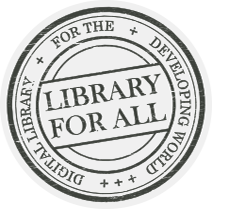 So! The talk! It was such an interesting collection of speakers. The focus of this particular panel was how to meet the needs of kids in the United States that have families from international cultures. I confess that I’d never heard of Library for All before. Though their primary purpose is to bring books to poverty stricken areas of the world, the organization also works closely with First Book to bring books from other countries to kids here in America. What struck me as particularly interesting is how they will essentially become book detectives for specific cultures and languages. Which is to say, they’ll go into other countries to seek out and find books that would otherwise never make it to American shores.
So! The talk! It was such an interesting collection of speakers. The focus of this particular panel was how to meet the needs of kids in the United States that have families from international cultures. I confess that I’d never heard of Library for All before. Though their primary purpose is to bring books to poverty stricken areas of the world, the organization also works closely with First Book to bring books from other countries to kids here in America. What struck me as particularly interesting is how they will essentially become book detectives for specific cultures and languages. Which is to say, they’ll go into other countries to seek out and find books that would otherwise never make it to American shores.
When it was time for questions I asked how librarians can work to promote international books here in the United States. There are some problems with doing so, of course. There is, and has always been, a marked preference for diverse American books vs. diverse international literature. Add in the fact that such books can only win a couple awards here and there, and there’s very little incentive on the part of the publishers to promote or distribute them.
In answering it was Hannah Ehrlich who gave me quite a lot to chew on. She pointed out to me (and this is key) that this isn’t just a children’s book problem. The wider difficulty comes with getting Americans as a whole used to different narrative styles. One way to do this is to get very young children used to these different kinds of books from the start.
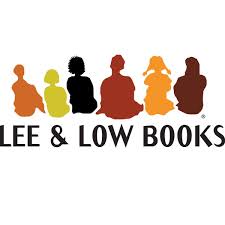 Another factor? The discoverability of international children’s book is key. Visibility is, in many ways, the greatest hurdle to overcome. That’s why we have USBBY lists like their yearly release of Outstanding International Books (you can find the 2016 list here). But the greatest hurdle? Getting such books into curriculum. To do this, publishers like Lee & Low work with the school and library market. The problem is that the text complexity of these books is often their downfall. Books written for foreign markets don’t care two bits about leveling. As a result, they’re often kept out of those schools that live and die by Fountas and Pinnell and their ilk.
Another factor? The discoverability of international children’s book is key. Visibility is, in many ways, the greatest hurdle to overcome. That’s why we have USBBY lists like their yearly release of Outstanding International Books (you can find the 2016 list here). But the greatest hurdle? Getting such books into curriculum. To do this, publishers like Lee & Low work with the school and library market. The problem is that the text complexity of these books is often their downfall. Books written for foreign markets don’t care two bits about leveling. As a result, they’re often kept out of those schools that live and die by Fountas and Pinnell and their ilk.
So what can be done? The panelists had some excellent suggestions. First off, let’s be honest. International children’s literature can sometimes be a hard sell. You can’t introduce these books to Americans cold. If you’re going to introduce a global perspective into your classroom, you need to foster a dialogue around these books. As for librarians, do displays of translated children’s books! Start international book clubs where you highlight a different country every month. And be aware that some types of books simply do not exist in other countries. Young adult literature, for example, just isn’t an age level designation in some places.
It was a good talk.
The second one I attended a little later was entitled Conversation Starter: Other People’s Voices: Using Global Literature in Translation to Reimagine Diversity in Libraries. Its panel consisted of Rachel Hildebrandt, Marc Aronson, and moderator Doris Gebel.
The problem? I had difficulty finding the room and missed Marc Aronson’s opening remarks. Too bad, since the man is a positive machine of good quotes. Here’s one I was able to catch:
“It is wrong to hem our children in to a national experience when they are living an international experience.”
Since the focus on this talk was, to a certain extent, translation, I was particularly intrigued by a mention made of something called The Global Literature in Libraries Initiative. In June there was an excellent piece in YALSA’s The Hub blog explaining what this is. As their mission statement says:
“. . . the Global Literature in Libraries Initiative strives to raise the visibility of world literature for adults and children at the local, national and international levels. We intend to do so by facilitating close and direct collaboration between translators and librarians, because we believe translators are uniquely positioned to help librarians provide support and events to engage readers of all ages in a library framework that explores and celebrates literature from around the world.”
There are a lot of great points in the piece. For example, when talking about the lack of international books available to a lot of kids today in our increasingly interconnected global world it said that, “Librarians play a key role in counteracting this dangerous insularity.”
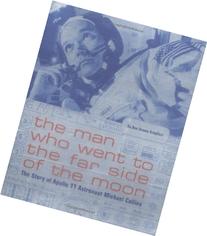 On the panel, the panelists mentioned that our love affair with translation is a funny, fickle thing. We do well when it comes to Pippi Longstocking, but we’re not great when it comes to contemporary literature. That gives the U.S. book market, and American children’s books in general, cultural dominance. To get an outsider perspective is invaluable to kids today. For example, in 2004 Chronicle Books won the Batchelder Award for The Man Who Went to the Far Side of the Moon: The Story of Apollo 11 Astronaut Michael Collins by Bea Uusma Schyffert, translated from the Swedish by Emi Guner. And let me tell you, our space program looks a LOT different when its story is told by someone other than rah-rah Americans.
On the panel, the panelists mentioned that our love affair with translation is a funny, fickle thing. We do well when it comes to Pippi Longstocking, but we’re not great when it comes to contemporary literature. That gives the U.S. book market, and American children’s books in general, cultural dominance. To get an outsider perspective is invaluable to kids today. For example, in 2004 Chronicle Books won the Batchelder Award for The Man Who Went to the Far Side of the Moon: The Story of Apollo 11 Astronaut Michael Collins by Bea Uusma Schyffert, translated from the Swedish by Emi Guner. And let me tell you, our space program looks a LOT different when its story is told by someone other than rah-rah Americans.
Doris Gebel urged the attendees to start kids young on international literature. Fail to do so and they won’t have a yearning for it as teens. Show them those “strange” books that confuse you, the adult. “Our young children need other books from other lands every day.”
Mention was made of the two major book lists/awards of translated children’s literature in the States. One is the Batchelder Award (named after Evanston librarian Mildred L. Batchelder so HOMETOWN PRIDE!) which is given each year. The International Books List (which I mentioned before) celebrates 40 books and breaks them down by age groups. That’s great, but the bulk of the books are from Western countries.
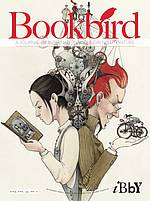 It was at this point that Marc Aronson spoke about the importance of distinctive translations. Take Anne Frank’s diary, for example. The version we read in schools is a very particular rendering. A lot of people would be shocked to hear that there are different versions out there. This reminded me of an article I read in Book Bird (a fantastic international children’s book periodical) years ago about how translating Hans Christian Andersen changes the meaning of his stories, depending on the translator. Until I read that piece it wasn’t something I’d thought about. As Marc said, “Translation is a creative act.” Mention was made at this time of the fact that for the very first time a woman has translated an edition of Madame Bovary. Meanwhile the famous translator of 100 Years of Solitude just died. If you think you know that book and you speak English, you only know his version.
It was at this point that Marc Aronson spoke about the importance of distinctive translations. Take Anne Frank’s diary, for example. The version we read in schools is a very particular rendering. A lot of people would be shocked to hear that there are different versions out there. This reminded me of an article I read in Book Bird (a fantastic international children’s book periodical) years ago about how translating Hans Christian Andersen changes the meaning of his stories, depending on the translator. Until I read that piece it wasn’t something I’d thought about. As Marc said, “Translation is a creative act.” Mention was made at this time of the fact that for the very first time a woman has translated an edition of Madame Bovary. Meanwhile the famous translator of 100 Years of Solitude just died. If you think you know that book and you speak English, you only know his version.
Today, things are perking up. In the last five years we’ve seen more small independent presses translating children’s books than ever before. Often these publishers are their own translators. Look at that USBBY list. It’s almost entirely small presses. And if these small presses don’t get reviewed in most of the journals out there (Kirkus is beloved to me because they take special care in reviewing the little guys) then the books just don’t get any attention.
When the audience members came up to speak, we heard some fascinating takes on all this. One woman said that the bulk of books translated from Colombia in the United States are about losing weight. She has Colombian immigrants in her library wondering aloud to her why Americans want them to lose weight so much, but that’s just what’s (weirdly) available.
So let’s talk solutions. What can libraries do to promote translated materials? Well, we could work with our immigrant communities more. Doris also pointed out that storytimes of translated books and library displays of translations could be useful as well. That got me to thinking how cool it would be if someone were to create lists like, “Top Ten Kids’ Books Translated from German” or “Top Ten Kids’ Books Translated from Swahili”. Or by country!
 Which finally brings us to the International Digital Children’s Library. If you haven’t seen it yet, please check it out. Seeking to serve the international community, the site makes, “the best in children’s literature available online free of charge.”
Which finally brings us to the International Digital Children’s Library. If you haven’t seen it yet, please check it out. Seeking to serve the international community, the site makes, “the best in children’s literature available online free of charge.”
Also mentioned was the collection at Worlds of Words, at the University of Arizona. The description reads, “Worlds of Words is committed to providing a range of resources to encourage educators at all levels to integrate global literature into the lives of children. The resources on this site grew out of work in schools around the world and the identification of needs…”
Thanks to both panels for this fascinating exchange of ideas. Much to chew on here.

 This Christmas I was delighted to find that someone had given me the latest incarnation of Harry Potter, this time in the form of the fully illustrated book by Jim Kay. Called Harry Potter and the Sorcerer’s Stone, my book was a little different as it was the British Harry Potter and the Philosopher’s Stone. My husband, knowing that I read all the original Harry Potter books in their British forms, was kind enough to let my in-laws know that it was my preferred version.
This Christmas I was delighted to find that someone had given me the latest incarnation of Harry Potter, this time in the form of the fully illustrated book by Jim Kay. Called Harry Potter and the Sorcerer’s Stone, my book was a little different as it was the British Harry Potter and the Philosopher’s Stone. My husband, knowing that I read all the original Harry Potter books in their British forms, was kind enough to let my in-laws know that it was my preferred version.
Truly, I’ve always loved the Britishisms of the original HPs. The hose pipes. The jumpers. The chips vs. crisps. Biscuits galore. Back in the day it got so that I could listen to the Jim Dale audiobooks and figure out where the American books were different. As I’m sure you all know, they were “translated”, after a fashion, for the U.S. audience.
The long term effects of this is that every time I read a children’s book that originated in the UK, I feel the American translations very keenly. For example, every time Lockwood and Company sit down to determine the order in which they should eat the household cookie stash, I just want to cross out the words “cookies” and replace them with “biscuits”.
Yet even more interesting are the times when translating for an American audience does not work. Two examples come to mind today, and they are both picture books that I have read to my children over and over and over again. Beloved books. Wonderful books. Books that I would buy again in a second, and yet their British to American translations stick out like sore thumbs.
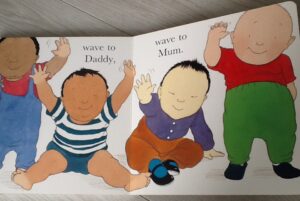 First up, the delightful Helen Oxenbury. Like many parents, I am in proud possession of a batch of four board books she created back in the 1980s. These include All Fall Down, Say Goodnight, Tickle,Tickle, and Clap Hands. Clap Hands is the book we’ll be focusing on today because it contains a soft rhyme that doesn’t really bother you until you realize where the change occurred. At the risk of invoking wrath of the copyright gods, here is the text of the very short book. “Clap hands / dance and sing / open wide /and pop it in. / Blow a trumpet / bang a drum / wave to daddy / wave to mom.” I’m sorry, I should have specified that this is the American version of the text. Naturally in the British edition that last rhyme would have read “wave to daddy / wave to mum”. After all, “mum” rhymes with “drum”. And I am not suggesting that Simon & Schuster should have kept the original text. It’s just one of those little things where when you notice it, it grates on you. Or maybe just me. Yeah. Probably me.
First up, the delightful Helen Oxenbury. Like many parents, I am in proud possession of a batch of four board books she created back in the 1980s. These include All Fall Down, Say Goodnight, Tickle,Tickle, and Clap Hands. Clap Hands is the book we’ll be focusing on today because it contains a soft rhyme that doesn’t really bother you until you realize where the change occurred. At the risk of invoking wrath of the copyright gods, here is the text of the very short book. “Clap hands / dance and sing / open wide /and pop it in. / Blow a trumpet / bang a drum / wave to daddy / wave to mom.” I’m sorry, I should have specified that this is the American version of the text. Naturally in the British edition that last rhyme would have read “wave to daddy / wave to mum”. After all, “mum” rhymes with “drum”. And I am not suggesting that Simon & Schuster should have kept the original text. It’s just one of those little things where when you notice it, it grates on you. Or maybe just me. Yeah. Probably me.
 The next example is a bit more of a ballsy switcheroo. Indeed, The Goldilocks Variations by Allan Ahlberg with illustrations by Jessica Ahlberg is such a delight that I am well and truly happy that it was brought to the U.S. The premise is simple. It tells the original story of Goldilocks and the Three Bears straight. Then you get the variations. In one version it’s The Thirty-three Bears. In another it’s done with aliens. In yet another, the very furniture of the house rises up to scare her away. Actually, this version with the furniture is the one that I mean. The art in this book is meticulous and tiny. Itty bitty illustrations scratched out in pen and ink and watercolors dot every page. The result is magical and allows for a very particular change.
The next example is a bit more of a ballsy switcheroo. Indeed, The Goldilocks Variations by Allan Ahlberg with illustrations by Jessica Ahlberg is such a delight that I am well and truly happy that it was brought to the U.S. The premise is simple. It tells the original story of Goldilocks and the Three Bears straight. Then you get the variations. In one version it’s The Thirty-three Bears. In another it’s done with aliens. In yet another, the very furniture of the house rises up to scare her away. Actually, this version with the furniture is the one that I mean. The art in this book is meticulous and tiny. Itty bitty illustrations scratched out in pen and ink and watercolors dot every page. The result is magical and allows for a very particular change.
Without getting too much into it, Goldilocks comes home to find her plates, knives, forks, spoons, etc. are engaged in a rousing baseball game. Reading this to my daughter I was a bit surprised. Baseball? Why on earth would the Ahlberg’s include baseball, of all things, in their book? So I peered as closely as I could at that itty-bitty, teeny weeny illustration. Yes, there was the cutlery. Yes, they were playing a game. But the game in question was clearly NOT baseball, though you wouldn’t know it without checking. The way they were holding their bats and the positions on the field . . . that’s cricket!! Granted, I know very little about cricket itself, but I am at least aware of what the playing field resembles and that was NOT a cricket game going on. But would any American necessarily notice? Nah. Obviously the publisher decided it would take people out of the story to encounter cricket in the middle of the book. As a result, it was determined not to be “too British” and we are the beneficiaries. I mean, look at these adorable tabs.
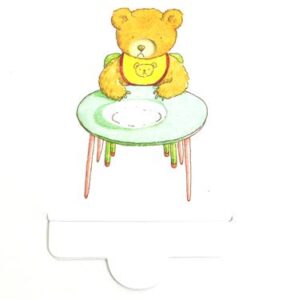

Who could resist that?
Have you ever noticed a “translation” of this sort? Or, for that matter (and almost more interestingly) do the British do it on their end? Do they change our baseball to cricket and our moms to mums? Somehow, I don’t think so, but I’d be curious to learn either way.

So I’m having lunch with author Jeff Baron (I REPRESENT SEAN ROSEN) the other day and we’re talking about his play VISITING MR. GREEN. It’s a remarkably popular work, and has had debuts all over the world. The topic naturally turned to translation and Jeff mentioned that he takes an active role in reading and critiquing the various translations of his work. This got me to thinking about translated children’s books. Not the foreign titles that are translated into English, but the American books that are translated into other languages around the world.
The fact of the matter is that the time and care and attention that Jeff has pored into the translations of his staged productions do not have much of a children’s book correlation. American authors, by and large, don’t tend to care what the translated versions of their stories sound like. And even if they do, I don’t think there’s a publisher contract out there that gives the author creative control over translation (you may feel free to correct me on this).
 Authors care about the translations of the titles of their books, of course. Jeff Kinney, for example, has gotten a lot of laughs from the fact that DIARY OF A WIMPY KID couldn’t be directly translated into German because there is no German equivalent for the word “wimpy”. Many authors, as it happens, enjoy seeing the different covers and titles of their books worldwide. How many, I wonder, take it a step further and translate back their own books so that they can see how their words have been changed? After all, if you’re going to be known to a foreign nation solely through your writing, wouldn’t you want that writing to be as pitch perfect and accurate as possible?
Authors care about the translations of the titles of their books, of course. Jeff Kinney, for example, has gotten a lot of laughs from the fact that DIARY OF A WIMPY KID couldn’t be directly translated into German because there is no German equivalent for the word “wimpy”. Many authors, as it happens, enjoy seeing the different covers and titles of their books worldwide. How many, I wonder, take it a step further and translate back their own books so that they can see how their words have been changed? After all, if you’re going to be known to a foreign nation solely through your writing, wouldn’t you want that writing to be as pitch perfect and accurate as possible?
For a time I had some fun collecting various editions of Harry Potter from around the world. Indeed, I have quite the little collection. My favorite of all these were the various editions of HARRY POTTER AND THE CHAMBER OF SECRETS. Why? The anagram. At one point in the story the words “I AM TOM RIDDLE” turn into “LORD VOLDEMORT” (should I have said “spoiler alert”?). In enjoying the various iterations of that anagram my husband and I noticed that in many cases the very names of the characters had changed. Two of my favorites -
Italian: “Tom Orvoloson Riddle” becomes “Son io Lord Voldemort”.
Czech: “Tom Rojvol Raddle” becomes “Ja Lord Voldemort”.
I’ve searched and searched for a website where someone comments on the changes in a foreign edition of one of the HP books but so far no go.
So I’m going to throw this one out to the authors out there, and not just those of the American persuasion. I want to know if in other countries writers care more about their English translations than we do about our foreign ones. Perhaps they don’t. Maybe no one cares. Maybe everyone does on some level. And are there authors here that have offered to personally oversee the translations of their books? Likely, but is it allowed? Will it ever be?
Much to chew on.


By:
Betsy Bird,
on 3/1/2012
Blog:
A Fuse #8 Production
(
Login to Add to MyJacketFlap)
JacketFlap tags:
Uncategorized,
Eerdmans Books for Young Readers,
translations,
children's literature in translation,
2012 picture books,
2012 reviews,
2012 translated children's books,
Don Bartlett,
Henrik Hovland,
Norwegian children's books,
Torill Kove,
translated picture books,
Add a tag
 John Jensen Feels Different
John Jensen Feels Different
By Henrik Hovland
Illustrated by Torill Kove
Translated by Don Bartlett
Eerdmans Books for Young Readers
$16.00
ISBN: 978-0-8028-5399-8
For ages 4-8
On shelves now
There is a lot to be said for a picture book book that is so unapologetically Norwegian that it ends up making you completely (not to mention unexpectedly) love it, regionalism and all. If you’ve ever encountered a large quantity of picture books from countries other than your own then you’ll know that tone is everything. Books in America tend to a have a distinctive flavor while books from other nations have another. Sometimes (often?) the two flavors don’t mix but once in a great while you end up with something like John Jensen Feels Different and everything’s okay again. A recent import, the book tackles the familiar theme of it’s-okay-to-be-different and gives it a bit of a twist. Understated and sly it’s a unique kind of book about a unique kind of guy. Funny and unfamiliar all at once, this is one case where the packaging matches the product.
John Jensen. He feels different. He feels it at home, on the bus, and at work. As we watch this perfectly amiable alligator (crocodile?) navigates through the realistic world of humans, holding down a good job as a tax consultant, we see him struggle with the idea. After much thought John decides that it’s his tail that makes him so very different from other people. Yet an attempt to tape it to his body only turns to pain when he sprains it after an accident. At the hospital he makes the acquaintance of Dr. Field (a nice elephant) who gives John the inspiring words he needs to stop being silly about his tail/who he is and to get on with his life.
I love the deadpan humor of it all. In fact the visual gags are such a perfect complement to the text that I was surprised to find that the author and illustrator weren’t one and the same. They must have consulted with one another heavily when creating the book. For example, I loved how artist Torill Kove portrayed John as a slightly sheepish reptilian office mate. There’s a great moment when he looks at a picture of fellow alligators, all of whom are his identical match, and he thinks, “Maybe I was adopted” followed by the book’s comment that “He doesn’t seem to look like anyone else in his family.” There were other little sly moments as well. I love that Dr. Field wears red sneakers. And I thought the endpapers were particularly keen. At the front of the book is the beginning of John tying his customary red bow tie and at the back is the rest of the process. It’s practically step by step.
 Then there’s the story itself. This is one of those books where the child readers squeal in frustration at the hero’s seeming stupidity. As John tries to figure out why exactly he’s different you can practically channel the voices of five-year-olds across the globe that scream, “He’s an alligator!!!” Of course, by not mentioning that John is an alligator (or is he a crocodile?) the book becomes an easy metaphor. By the way, the translation of the book is by one Don Bartlett. Let
Then there’s the story itself. This is one of those books where the child readers squeal in frustration at the hero’s seeming stupidity. As John tries to figure out why exactly he’s different you can practically channel the voices of five-year-olds across the globe that scream, “He’s an alligator!!!” Of course, by not mentioning that John is an alligator (or is he a crocodile?) the book becomes an easy metaphor. By the way, the translation of the book is by one Don Bartlett. Let

By:
Betsy Bird,
on 5/25/2011
Blog:
A Fuse #8 Production
(
Login to Add to MyJacketFlap)
JacketFlap tags:
Harry Potter,
Uncategorized,
photography,
NYPL,
Margaret Mahy,
LGBT,
Diane deGroat,
apps,
Amulet Books,
New Blog Alert,
Leslea Newman,
Fusenews,
2011 Awards,
Hans Christian Andersen Award,
Ree Drummond,
Tales from NYPL,
children's literature in translation,
Edward Steichen,
myth mistakes,
New Zealand: More than just Flight of the Conchords,
Add a tag
 With Book Expo going full-blast in town and my library celebrating its Centennial all at the same time, blogging is possible but slightly more difficult than usual. I am amused to find that when I skip a day some folks worry that I might be in labor. Fear not. I’ll find a way to update the blog with that news, come hell or high water. Tonight, meanwhile, is also my final Kidlit Drink Night (at least for a while) so if you’d like to view my largess (or, rather, largeness) here are the details. Meanwhile, back at the ranch . . .
With Book Expo going full-blast in town and my library celebrating its Centennial all at the same time, blogging is possible but slightly more difficult than usual. I am amused to find that when I skip a day some folks worry that I might be in labor. Fear not. I’ll find a way to update the blog with that news, come hell or high water. Tonight, meanwhile, is also my final Kidlit Drink Night (at least for a while) so if you’d like to view my largess (or, rather, largeness) here are the details. Meanwhile, back at the ranch . . .
- So I go into the administrative office the other day to pick up my room’s checks and WHAM! Two gigantic Lego statues of Patience and Fortitude (the library lions) are just sitting there, chewing their cuds (or whatever it is Lego lions chew). I showed them to a class of second graders on a tour a day or so later (they’re on display in our main hall, if you’re curious) and one kid said that looking at them was like looking at a computer screen. He had a point. They’re mighty pixilated.
- Wow. That’s pretty cool. The organization Keshet (“a national organization working for the full inclusion of lesbian, gay, bisexual and transgender Jews in Jewish life”) is releasing posters of LGBT Jewish Heroes. One of the posters available? Leslea Newman of Heather Has Two Mommies and my favorite LGBT board books Mommy, Mama and Me and Daddy, Papa, and Me. Thanks to Marjorie Ingall for the link.
- Do you have what it takes to take on the Sixth Annual 48 Hour Book Challenge? I don’t want to hear your excuses! I want to see you reading. You’ve some time to prep so get those eyeball stalks limbered up.
- Recently I attended SLJ’s Day of Dialog (slooooow emerging blog post to come on the subject). The keynote speech was delivered by Katherine Paterson who began, much to my delight, with some praise of New Zealand children’s book superstar Margaret Mahy (who would be a superstar here if they just friggin’ republished The Changeover *coughcough*). Anyway, it seems she recently won in the picture book category of the 2011 New Zealand Children’s Book Awards. What would you like to bet me that someday they’ll rename those awards “The Mahys”? I give it ten years, tops.
 I know it gets confusing but this list is a bit different from the Calde-not list from a couple days ago. The reason is simple. While the Calde-not list looks primarily at books with illustrations so distinguished they could easily win major illustration awards if given half a chance, this is list is more for those books that may not blow you away on a first glance, but that make our publishing landscape richer for their very existence. I was inordinately pleased after I read each and every one of these books. They’re a little peculiar, distinctly different from what you’ll find in the American market, and altogether remarkable.
I know it gets confusing but this list is a bit different from the Calde-not list from a couple days ago. The reason is simple. While the Calde-not list looks primarily at books with illustrations so distinguished they could easily win major illustration awards if given half a chance, this is list is more for those books that may not blow you away on a first glance, but that make our publishing landscape richer for their very existence. I was inordinately pleased after I read each and every one of these books. They’re a little peculiar, distinctly different from what you’ll find in the American market, and altogether remarkable.



































I teach in a low-income school and one of the places I recommend my students and teachers purchase books is this great discount store nearby called Ollie’s. It might be a chain. They have wonderful, slightly older picture, chapter, and nonfiction books for kids that are usually priced less than $5.00. The best part is that they are right inside the door, begging to be purchased.